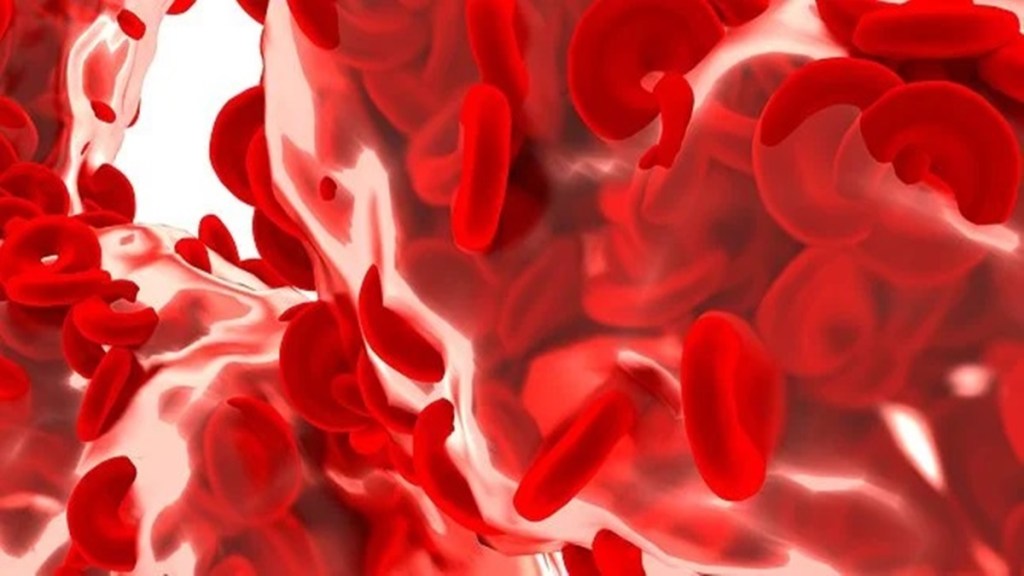By Dr. Gautam Wankhede
Sickle cell anemia is a major public health problem in India. India is estimated to have the second-highest burden of the disease, with over 2 crore people with sickle cell traits and 14 lakhs with sickle cell disease. The disease disproportionately impacts vulnerable tribal communities in India where about 1 in 86 births among indigenous communities, are affected by it.
Sickle cell anemia is a genetic blood disorder characterized by abnormally shaped red blood cells. This condition can lead to various complications, including severe pain, organ damage, and a reduced lifespan. However, with early detection through sickle cell anemia testing, individuals can receive appropriate medical care and interventions to manage the disease effectively. Early diagnosis and providing care are critical because of the possibility of serious complications.
Sickle Cell Anaemia has been catapulted into the mainstream conversation since the recent Union Budget announced a mission to eliminate SCA by 2047. Eliminating sickle cell anemia in India requires a comprehensive approach that encompasses awareness, screening, early detection, genetic counselling, and improved healthcare access.
Early Diagnosis and Treatment:
Timely detection of Sickle cell anemia testing plays a crucial role in the early management of the disease. Early identification of individuals with sickle cell trait or sickle cell disease allows healthcare professionals to provide appropriate medical interventions and comprehensive care. Early diagnosis enables the initiation of preventive measures, effective management strategies, and the development of personalized treatment plans tailored to each patient’s specific needs.
Early, simple, cost-effective measures can change the prognosis of SCA in childhood. Neonatal screening for early diagnosis, penicillin prophylaxis and immunization to control the infectious risk along with parents and medical community education have dramatically decreased SCD-related childhood mortality in high-income countries, where more than 90 per cent of children with SCD survive to adulthood.
Premarital Counselling and Prenatal Screening:
Premarital screening involves testing couples who are planning to get married soon for common genetic blood disorders (e.g. sickle cell anemia and thalassemia and sickle cell anemia). If both partners are carriers of the sickle cell trait, there is a risk of passing the disease on to their children. Pre-marital counselling can help couples understand their risks, explore various reproductive options, and make informed choices to reduce the likelihood of having a child with sickle cell anaemia. Sickle cell anaemia testing allows individuals and families to make informed decisions regarding family planning.
Testing can also help identify individuals at risk of having a child with the disease, enabling them to access appropriate prenatal care and interventions. Ensuring access to accurate and reliable prenatal and preimplantation diagnostic services is crucial in preventing the birth of children with sickle cell anaemia.
New-born Screening:
Early detection of SCD is extremely useful for improving the quality of life. Therefore, neonatal screening for SCD is recommended. New-born screening programs are essential in identifying infants with sickle cell disease at birth. About a third of children afflicted with the disease die before reaching adulthood and a fifth before they even reach two years of age. Early detection through new-born screening enables prompt medical intervention, including the initiation of preventive treatments, early management of complications, and follow-up care. Early diagnosis and treatment have been shown to improve survival rates, reduce morbidity, and enhance the overall well-being of children with sickle cell anaemia.
Enhancing Awareness and Education:
Creating awareness about sickle cell anaemia is crucial to reduce its prevalence. Public education campaigns should focus on raising awareness about the disease, its genetic nature, inheritance patterns, and the importance of genetic testing. Educating individuals, families, and communities can help dispel myths and misconceptions surrounding sickle cell anaemia and encourage informed decision-making.
Improved Healthcare Services:
Enhancing healthcare services for individuals with sickle cell anaemia is essential to manage the disease effectively and improve their quality of life. This includes access to specialized care, regular health check-ups, early detection and treatment of complications, and appropriate pain management. It is important to vaccinate new-borns and provide timely drug treatment to patients, using Hydroxyurea which helps relieve pain. Healthcare providers should receive training to enhance their understanding of the disease and its management, enabling them to provide comprehensive care to affected individuals.
Blood transfusion is established as an important treatment in SCA. India is estimated to have the biggest unmet need for blood units in the world, with important implications for the treatment of SCA. Making reliable and safe blood transfusion services available would improve the standard of care for patients with SCA and facilitate the development of curative treatments, including gene therapy and bone marrow transplantation.
Population Screening and Public Health:
Implementing population screening programs for sickle cell anaemia can have significant public health benefits. Regular and timely screening of the population is important because in a previous screening exercise of over 1.13 crore people in 2016, which was conducted separately by the Ministry of Tribal Affairs, up to 9,49,057 (8.75%) tested positive for the sickle cell trait. Up to 47,311 of these ended up with full-blown sickle cell disease. There is a greater need is to focus on population health parameters related to epidemiology, access to care and coverage of services/programmes for population screening. Screening programs identify individuals with the sickle cell trait, facilitating early education and awareness about the disease. Population screening also provides valuable data for public health planning and resource allocation to support affected individuals and their families.
Research and Advancements:
Sickle cell anaemia testing contributes to ongoing research and advancements in the field. By identifying individuals with the disease or carrying the sickle cell trait, researchers can gain insights into the prevalence, distribution, and impact of sickle cell anaemia in different populations. This knowledge fuels scientific research promotes the development of new therapies, and fosters collaborations aimed at finding a cure for this challenging condition.
Conclusion:
Eliminating sickle cell anaemia in India requires a multifaceted approach that encompasses awareness, genetic screening, counselling, improved healthcare access, research, and supportive policies. By combining these strategies, India can work towards reducing the burden of sickle cell anaemia, improving the lives of those affected, and ultimately preventing the transmission of the disease to future generations. It is crucial to prioritize and promote widespread access to sickle cell anaemia testing to ensure early intervention, reduce complications, and enhance the quality of life for those living with this condition. It is a collective responsibility of individuals, communities, healthcare professionals, researchers, and policymakers to work together to achieve this important goal and create a future free from the challenges of sickle cell anaemia.
(The author is a Director of Medical Affairs, Mylab. Views expressed are personal and do not reflect the official position or policy of the FinancialExpress.com.)









